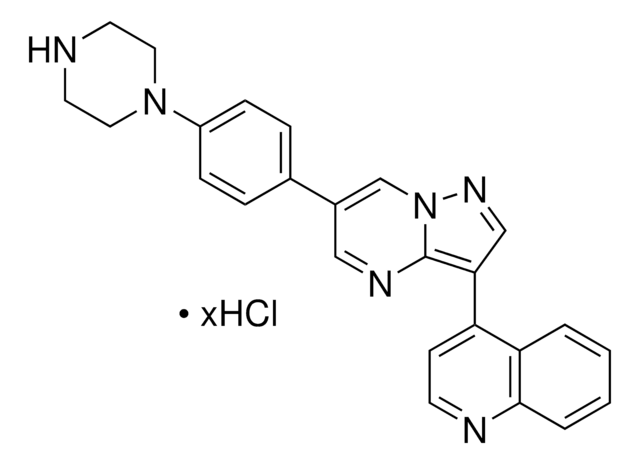ABE1402
Anti-LHX2 Antibody
serum, from rabbit
Sinónimos:
LIM/homeobox protein Lhx2, Homeobox protein LH-2, LIM homeobox protein, LHX2
About This Item
Productos recomendados
biological source
rabbit
Quality Level
antibody form
serum
antibody product type
primary antibodies
clone
polyclonal
species reactivity
mouse, human
technique(s)
ChIP: suitable (ChIP-seq)
immunofluorescence: suitable
western blot: suitable
NCBI accession no.
UniProt accession no.
shipped in
dry ice
target post-translational modification
unmodified
Gene Information
mouse ... Lhx2(16870)
General description
Immunogen
Application
Chromatin Immunoprecipitation Analysis: A representative lot detected Lhx2-targeted promoter and enhancer regions using α6hi/CD34+ skin cells enriched in hair follicle stem cells (HF-SCs) from mice at the second telogen developmental stage (Folgueras, A.R., et. al. (2013). Cell Stem Cell. 13(3):314-327).
Chromatin Immunoprecipitation-Sequencing Analysis: A representative lot detected Lhx2-targeted promoter and enhancer regions by a genome-wide ChIP-seq analysis using α6hi/CD34+ skin cells enriched in hair follicle stem cells (HF-SCs) from mice at the second telogen developmental stage (Folgueras, A.R., et. al. (2013). Cell Stem Cell. 13(3):314-327).
Immunofluorescence Analysis: A representative lot (1:1,000 dilution) detected Lhx2 immunoreactivity in human skin samples by fluorescent immunohistochemistry using OCT-embedded, PFA-fixed cryosections (Data courtesy of Dr. Elaine Fuchs, Howard Hughes Medical Institute, The Rockefeller University ).
Epigenetics & Nuclear Function
Nuclear Receptors
Quality
Western Blotting Analysis: A 1:5,000 dilution of this antibody detected doxycycline-induced LHX2 expression in 10 µg of Murine keratinocyte K14rtTA-LHX2-TRE cell lysate.
Target description
Physical form
Storage and Stability
Handling Recommendations: Upon receipt and prior to removing the cap, centrifuge the vial and gently mix the solution. Aliquot into microcentrifuge tubes and store at -20°C. Avoid repeated freeze/thaw cycles, which may damage IgG and affect product performance.
Other Notes
Disclaimer
¿No encuentra el producto adecuado?
Pruebe nuestro Herramienta de selección de productos.
Storage Class
12 - Non Combustible Liquids
wgk_germany
WGK 1
flash_point_f
Not applicable
flash_point_c
Not applicable
Certificados de análisis (COA)
Busque Certificados de análisis (COA) introduciendo el número de lote del producto. Los números de lote se encuentran en la etiqueta del producto después de las palabras «Lot» o «Batch»
¿Ya tiene este producto?
Encuentre la documentación para los productos que ha comprado recientemente en la Biblioteca de documentos.
Nuestro equipo de científicos tiene experiencia en todas las áreas de investigación: Ciencias de la vida, Ciencia de los materiales, Síntesis química, Cromatografía, Analítica y muchas otras.
Póngase en contacto con el Servicio técnico






